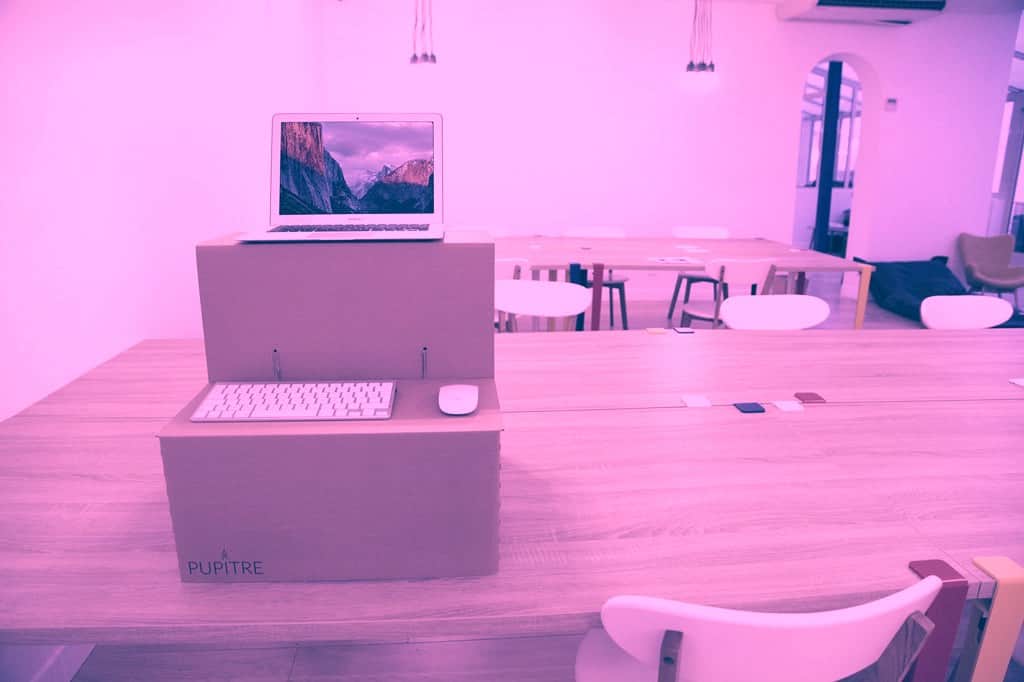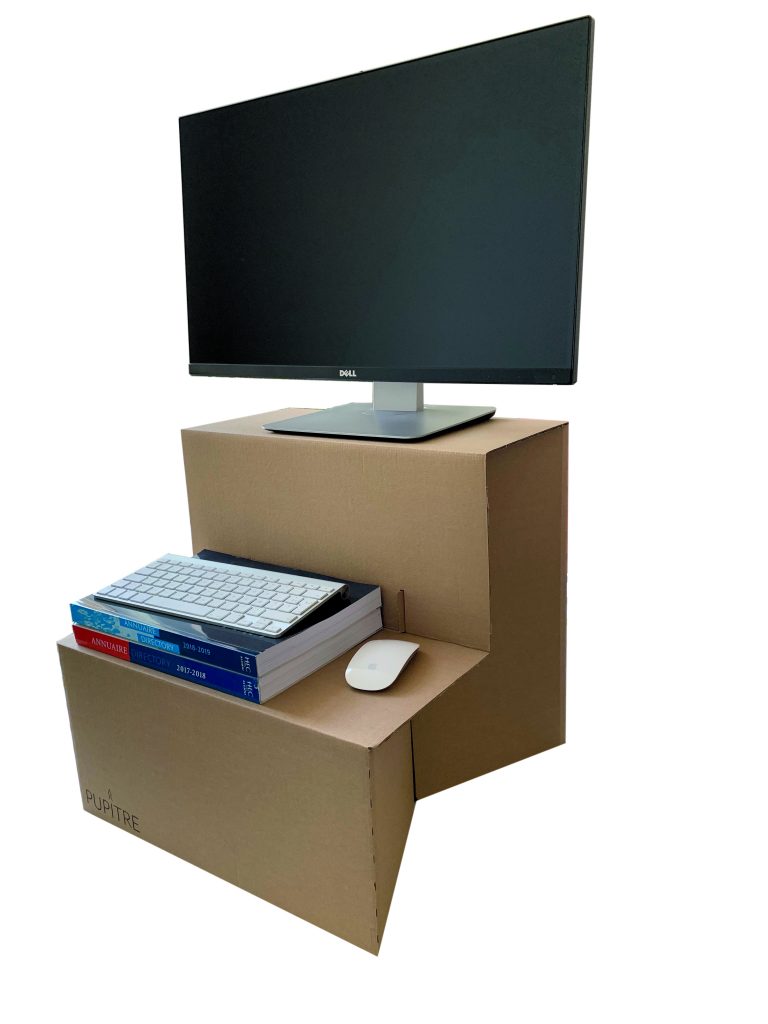We tested for you : the cardboard standing desk

For two weeks and in real-life conditions, Flavia Sanches and Arthur Haimovici (not Lionel, who was too lazy) tested the standing desk made by Pupitre, a start-up.
Why a standing desk?
“Sitting is the new cancer,” said Tim Cook, the head of Apple, announcing that all employees at the new headquarters would have a standing desk. Research shows that sitting for too long affects life expectancy and the risk of diseases, especially cardiovascular ones. Working standing up is one solution to reduce the dangers of physical inactivity.
But why cardboard?
As a material, cardboard is light, hardy, and above all, cheap! This allows Pupitre to sell their standing desk (which sits on top of your current desk) for a very reasonable €29 (with a discount when you order 6 units or more), and makes delivery easier. The investment is much less than for a “real” sit-stand desk, which costs several hundred euros.
Is it easy to set up?

The desk arrives folded, but almost ready for use. And there is no IKEA-like assembly required: you just slot the pieces together before placing it on your desk. Then you just have to put your laptop or monitor and keyboard on it, and you’re done… or almost! Because obviously, such a straightforward piece of furniture does not have adjustable settings. So unless by miraculous coincidence it just happens to be at the right height, you will need to raise your screen, or your keyboard. We put a phone book under the keyboard and a small stack of books to raise the level of the mouse. And it works. Although, from an aesthetic point of view, the result may be open to debate.
So, it lived up to its promise?
From the very first hour, we felt more energized, and there is something pleasing about being in a more active and mobile position than usual. You force yourself to stand up straight, and you find yourself leaving your workstation more frequently to go and talk to a colleague instead of just sending an email. After a while, there was just a little discomfort in the shoulder due to the limited space available for the mouse. But by the end of the day, things have changed for the worse. You start to feel tired, your knees are sore, and you instinctively start to lean on whatever is within reach. You end up adopting less ergonomic positions to relieve your back, and so on. Realistically, you would need to be able to alternate between standing and sitting (which is what “real” sit-stand desks allow), but this involves moving your screen or laptop all over again, along with the objects you used to raise them. Doable, but not practical.
Who is it for?
It is a cheap and easily transportable solution to combat physical inactivity or just to test the concept. Compact, surprisingly stable and sturdy for cardboard (even with a very heavy monitor), it does its job well. But if you are already won over by the concept and don’t need to change workplaces frequently (and you are willing to spend more), a sit-stand desk may be a better option. And if you are put off by the idea of standing all day, there are other ways to fight against sedentary working habits.
Published by La rédaction

